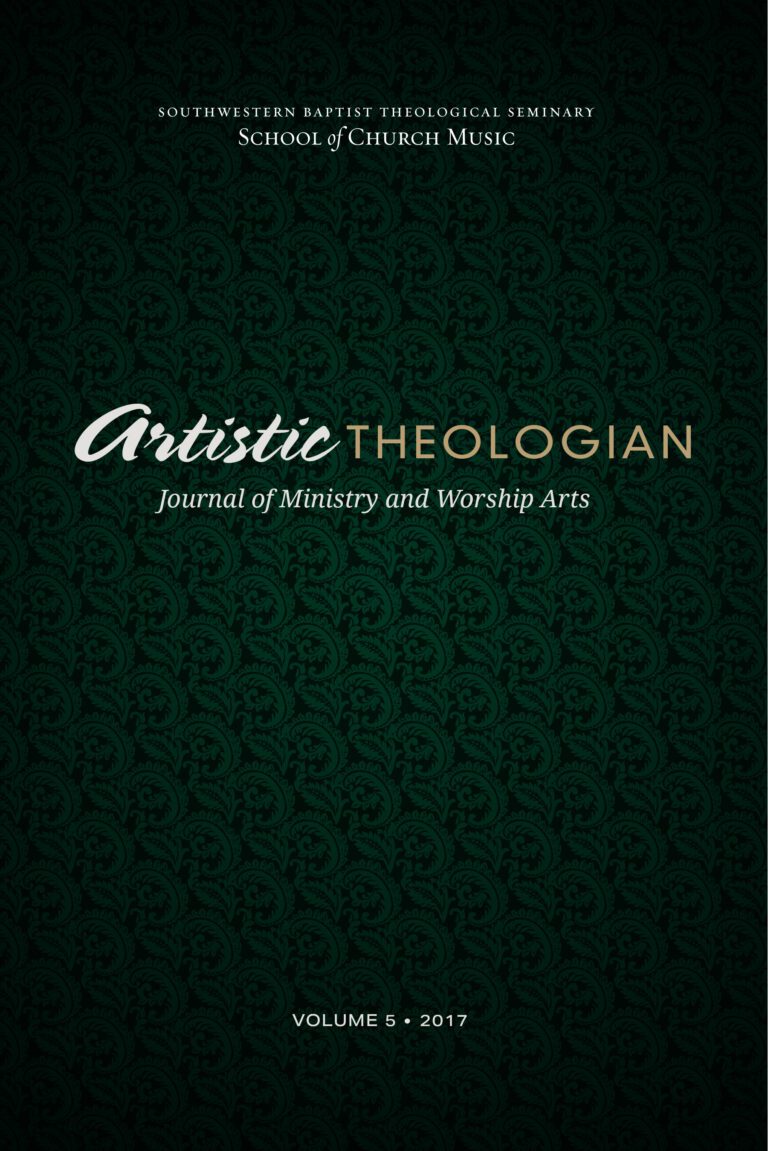
Forming Disciples through Corporate Worship
Artistic Theologian
Volume 5, Summer 2017
Editor-in-Chief: Scott Aniol
Jesus and the Jewish Roots of the Eucharist: Unlocking the Secrets of the Last Supper, by Brant Pitre. New York: Image, 2011. 244 pp. $15.00.
Brant Pitre, the author of Jesus and the Jewish Roots of the Eucharist: Unlocking the Secrets of the Last Supper, is a professor of Sacred Scripture at Notre Dame Seminary in New Orleans, Louisiana. Jesus and the Jewish Roots of the Eucharist looks at the roots of the Last Supper through a historical Jewish lens. Pitre tries to discover the real meaning behind Jesus’ words “Take, eat, this is my body” by interpreting the words and deeds in their historical Jewish context. He argues that one cannot know who Jesus was and what he has said unless they understand the context it derives from, in this case, ancient Judaism. To do this, he examines the Old Testament, where he draws a parallel between the Passover in Exodus and the Last Supper that Jesus had with his disciples. He looks in depth at all the things that surround the events of the exodus including the Passover, the manna, and the bread of the presence through the lens of Jewish beliefs, which help to explain the significance of the Lord’s Supper and the meaning behind what Jesus said about the bread and the wine being his body and blood.
Pitre defends his case by continuously drawing parallels between the Old Testament Passover and the New Testament Lord’s Supper. In the Passover, each father from the twelve tribes was a “priest” over his family, an unblemished male lamb was sacrificed, the blood of the lamb was spread, and the flesh of the lamb was eaten (55). In the New Testament, the Passover that was once commemorated became the Last Supper, or Jesus’s New Passover as Pitre puts it, Jesus himself was the lamb. There would be a new exodus through Jesus. In this case he draws very clear similarities between the exodus Passover and new Passover as the old is a prototype of the new. The author discusses every similarity in order to support his claim. His strongest argument, in this section, was that the exodus Passover was not complete until the Israelites ate from the sacrificed lamb. He linked this to the Eucharist saying that believers must also eat of Jesus’ flesh in order to truly take part in the Lord’s Supper. As part of the Eucharist ritual the “flesh” and “blood” is consumed; however, Pitre argues that it is actually Jesus within these elements. He reasons that since it was Jesus’ command that we eat of his flesh, the bread that we eat in the Eucharist must then be Jesus himself (74).
Pitre also uses manna, given to the Israelites during their time in the wilderness, to represent quite a few things that supposedly reveal the mysteries of the Eucharist. First, Pitre argues that it is miraculous or supernatural, like Jesus. Second, it is given daily, which Jesus also mentions in his Lord’s Prayer; “Give us this day our daily bread.” Third, it is holy since it was from God and placed in the Tabernacle. Lastly, it gives a foretaste of the promised land as it is “like wafers made with honey” (84). All arguments seem correct at first glance. However, the interpretation that Pitre makes on every point is quite a stretch. He argues that the manna is supernatural because of how it was given and who it was from. He makes the claim that manna has existed from the beginning of creation and is still eternally kept in heaven, arguing that things on earth are just copies of heavenly things (88). What makes his claim hard to grasp is that his source is not the Bible, but other sources from ancient Jewish writings, such as the Mishnah and the ancient Targum. As believers in Christ, we hold that Scripture is the only Word that is God-breathed and true. These other sources are accounts that have been written by others who may have their own interpretation. Pitre supports his argument by saying that “ancient Jews believed that the Temple was an eternal reality that existed in Heaven long before it existed on earth, so, too, some Jews saw the manna as an eternal reality that existed in Heaven long before it rained down to earth” (90). These “evidences” come from unreliable sources that may have even come from pagan thoughts and interpretations in those days. Though Pitre stacks his ideas neatly, his references bring about empty validations as they comes from sources which are unreliable for those who believe Scripture to be the one true source.
Pitre has shown light on the Last Supper and how it parallels with the Passover and the exodus in the Old Testament. While much of his evidence from the Old Testament is accurate, he stretches some of his interpretations with the use of ancient Jewish sources. Though these sources are helpful, to make concrete conclusions based on many ancient interpretations that may have been intertwined with pagan thoughts is a bit unsettling, especially if it is to make conclusions about God’s ordinance. His thought process was clear and manageable to follow because of the organization; however, I felt that many of his ideas were new and too large to grasp for this book’s size. Overall, this book helped me to see how significant the Lord’s Supper is, and it showed me a new view of the Eucharist, though I was a bit taken aback by his interpretations. After reading this book, I realize the importance of seeing it in this light. Therefore, I think it will be helpful for those who have prior knowledge of the Lord’s Supper, but want to see it in a new, Jewish perspective.
Ha Eun Yoo
Southwestern Baptist Theological Seminary





